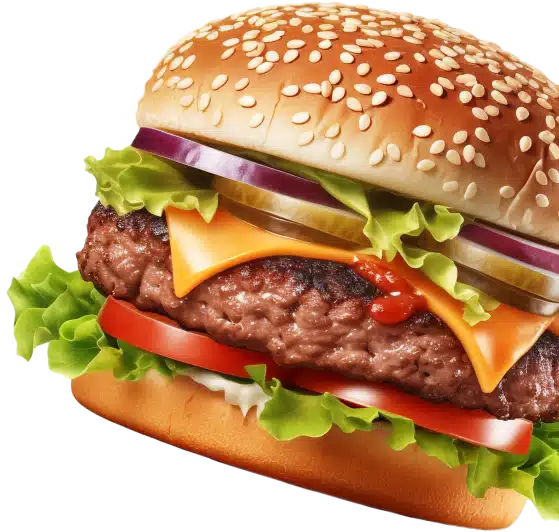Every business owner knows how important it is to stand out from the competition and how intelligent marketing helps. But you can become the talk of the town by adding a display window with too-good-to-be-true-looking food replicas. These faux food models have become an indispensable part of Japanese restaurants and eateries. Read on to find out how your real food wins with these display foods.
What are replica foods in display windows?
Replica foods, fake food, or food models are inedible imitations of their edible counterparts. They are made from a variety of synthetic materials including silicone, resin, plastic, PVC, clay, and more. They are hyper-realistic in colours and even texture. The fun thing about these foods is that they can be made in any size ranging from miniatures to life-size and even larger than their standard size.
Where are replica foods used?
Display windows with these stunning food models are a common sight in the streets of Japan. These faux food displays are a staple marketing technique at restaurants, eateries, and food courts across Japan. They have been part of Japanese restaurant culture since the late 1920s (the Taisho period).
Fake Foods in Japan is an art form that has been hand-crafted by skilled artisans for years. Even though modern ways of replicating food exist, most artisans in Japan prefer to hand-paint their models. These models are called “shokuhin sampuru” or simply “sampuru”.
In recent years, countries like South Korea, China, and Thailand, have adopted this culture of display foods.
Faux foods are not only used in display windows at storefronts but for several reasons. Some of them include,
- Props for films, shows, and plays. These faux food models are used in filming and onstage as they do not spoil or attract flies or other pests.
- Souvenirs and gifts. Replica foods are very popular items as souvenirs and gifts. Many people buy these foods as souvenirs from gift shops in Japan.
- Museums and Food Exhibitions. Replica foods are a great alternative to real foods when they have to be displayed for long hours in the open. They do not spoil, attract pests, or give off odours.
- Photography and filming. Instead of real food, commercials, and photo sessions make use of replica food models. These are easier to handle as they do not spill or spoil. These foods are vibrant and fresher looking for the camera.
- Classes & Presentations. Replica foods are a great visual tool for children to learn and build a healthy relationship with foods across the world. These food models are a great way to introduce children to new foods as well as understand their portion sizes.
- Ornamental displays. One of the popular uses of replica food models is as ornamental pieces. Some couples even use elaborately decorated wedding cakes for their ceremony while they serve their guests sheet cake.
Replica foods as a visual marketing tool
Though these faux foods seem just pretty to the eyes, they serve as an important marketing tool. Most restaurants and eateries across Japan use them not just for the purpose of a visual menu, but these items serve as a marketing tool in itself.
Here are the ways that replica foods can become the best marketing tool you can invest in.
- Attention-grabbing. The presence of an elaborately decorated and well-lit display window with vibrant replica foods makes it easier to grab the attention of passers-by and potential diners, than traditional signage.
- Stimulate appetites. The people who come closer to display windows are more likely to enter the eatery to have a meal. These 3D replica models are said to make people hungry at the sight of them.
- Increase attendance. According to marketers, the attendance rate increases by 60% or more with replica food displays. The life-like representation of what the dish looks like along with price tags help diners to choose their meals effectively.
- Increasing average bills. The average bill of diners is said to increase by 40% or more. This is due to the fact that people are tempted to buy more and eat more when they see life-like models of the food served.
- Reduction in ordering time and mistakes. With the aid of a visual menu featuring replica foods, diners can make their orders without confusion. These models effectively convey the portion size and texture of the food.
- Reducing the time of service provision. The time to provide the service to customers decreases by 40% as they would have already decided on what they want to eat from the display window itself.
- Build loyalty. Almost 40% of diners return to restaurants with display foods as the visual appeal of the display window makes customers want to try more foods.
- Free advertising. Many people take photos of stunning display windows and even post them on social media. Word of mouth is also a great way to increase sales.
- Cost efficient. Investing in replica foods is a one-time affair, as they do not spoil or fade away. These food models are durable and look fresher for years inside a display window.
- Creates an identity. The food models that you display can be custom-made and hence sets you apart from your competition. Your diners will distinguish you from other businesses because of colourful display windows.
- Promotes hygiene. Since these food models are not edible, they do not attract flies and other pests. Your display window would look and be more hygienic than edible foods.
- Increase turnover rates. Most people who browse display windows end up buying something from it. Display foods have been said to significantly increase diner turnover rates.
To sum up, replica food models are a great marketing tool that leaves a lasting impression on your customers. Along with setting you apart from your competitors, this 3D marketing tool increases customer engagement and enhances brand recognition.
These fake foods are the sustainable and cost-efficient way of driving your sales.





